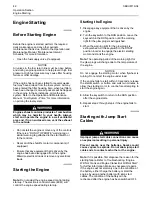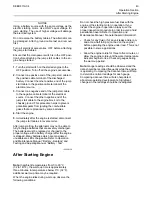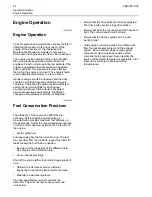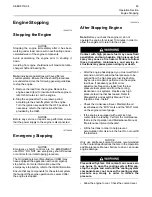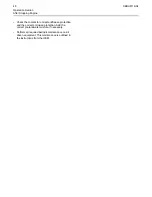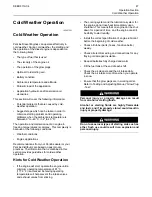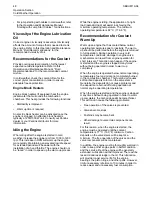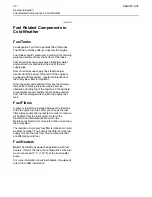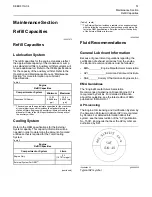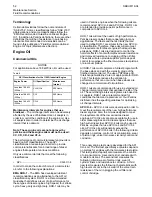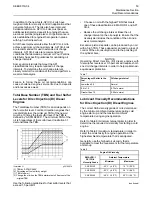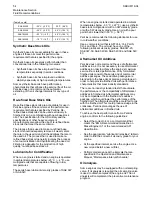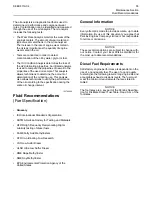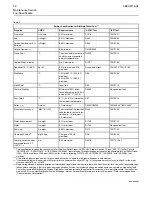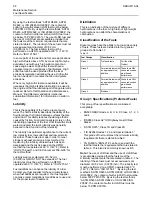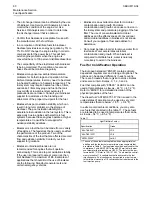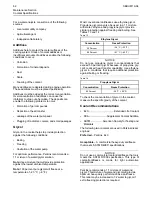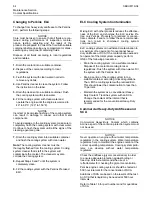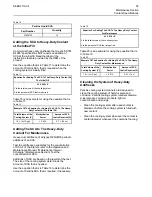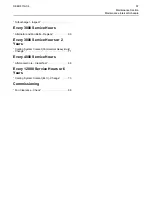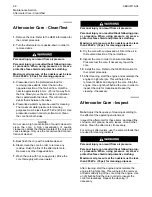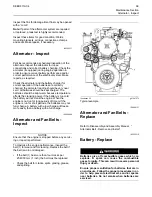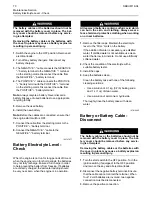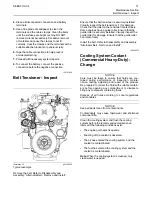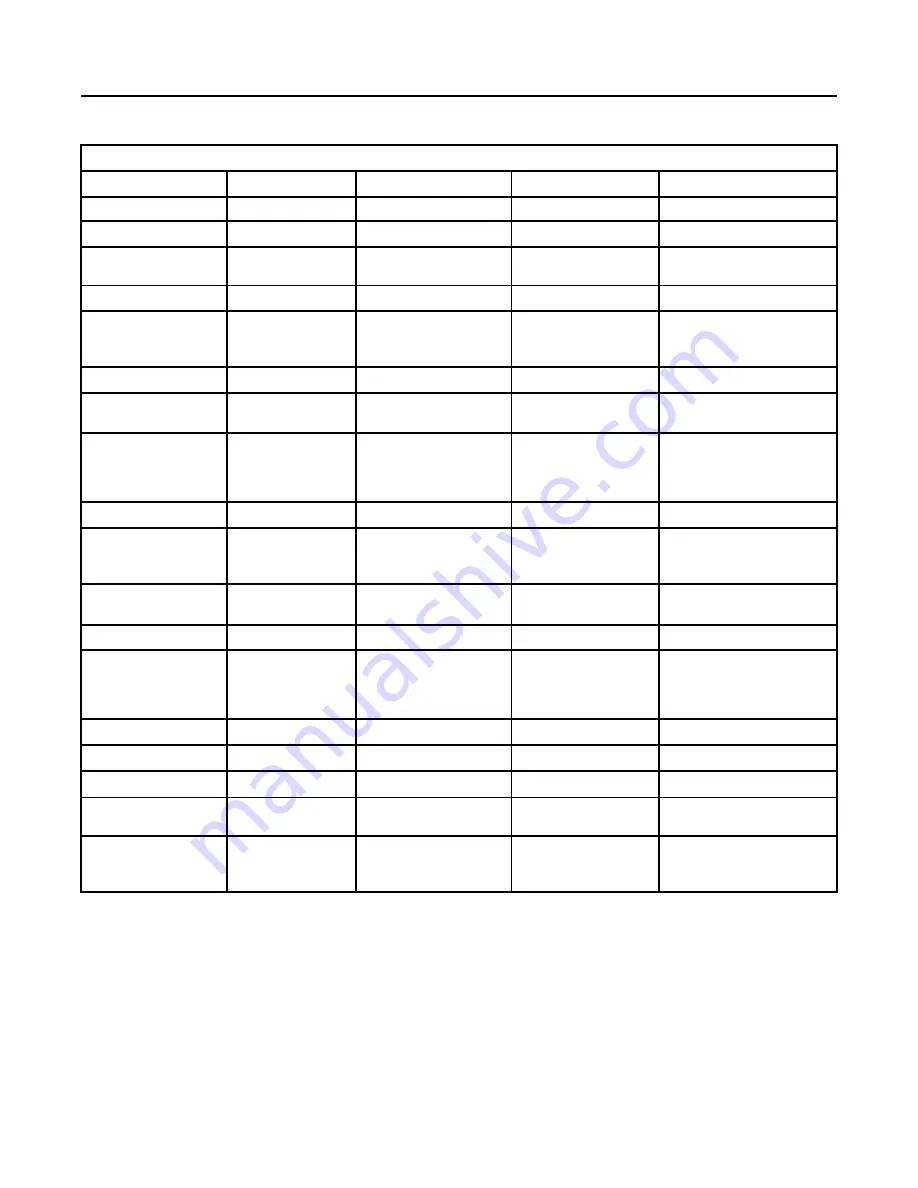
Table 9
Perkins Specification for Distillate Diesel Fuel
Property
UNITS
Requirements
“ASTM”Test
“ISO”Test
Aromatics
%Volume
35% maximum
D1319
“ISO”3837
Ash
%Weight
0.01% maximum
D482
“ISO”6245
Carbon Residue on 10%
Bottoms
%Weight
0.35% maximum
D524
“ISO”4262
Cetane Number
-
40 minimum
D613/D6890
“ISO”5165
Cloud Point
°C
The cloud point must not ex-
ceed the lowest expected
ambient temperature.
D2500
“ISO”3015
Copper Strip Corrosion
-
No. 3 maximum
D130
“ISO”2160
Density at 15 °C (59 °F)
Kg / M
3
801 minimum and 876
maximum
No equivalent test
“ISO 3675 ”“ISO 12185”
Distillation
°C
10% at 282 °C (539.6 °F)
maximum
90% at 360 °C (680 °F)
maximum
D86
“ISO”3405
Flash Point
°C
legal limit
D93
“ISO”2719
Thermal Stability
-
Minimum of 80% reflec-
tance after aging for 180 mi-
nutes at 150 °C (302 °F)
D6468
No equivalent test
Pour Point
°C
6 °C (42.8 °F) minimum be-
low ambient temperature
D97
“ISO”3016
Sulfur
%mass
1% maximum
D5453/D26222
“ISO 20846 ”“ISO 20884”
Kinematic Viscosity
“MM”
2
“/S (cSt)”
The viscosity of the fuel that
is delivered to the fuel injec-
tion pump. “1.4 minimum/
4.5 maximum”
D445
“ISO”3405
Water and sediment
% weight
0.1% maximum
D1796
“ISO”3734
Water
% weight
0.1% maximum
D1744
No equivalent test
Sediment
% weight
0.05% maximum
D473
“ISO”3735
Gums and Resins
mg/100mL
10 mg per 100 mL
maximum
D381
“ISO”6246
Lubricity corrected wear
scar diameter at 60 °C
(140 °F).
mm
0.52 maximum
D6079
“ISO”12156-1
(1)
This specification includes the requirements for Ultra Low Sulfur Diesel (ULSD). ULSD fuel will have ≤ 15 ppm (0.0015%) sulfur. Refer to
“ASTM D5453”, “ASTM D2622”, or “ISO 20846, ISO 20884” test methods. This specification includes the requirements for Low Sulfur Diesel
(LSD). LSD fuel will have ≤500 ppm (0.05%) sulfur. Refer to following:“ASTM 5453, ASTM D2622”, “ISO 20846” and “ISO 20884 test
methods”.
(2)
A fuel with a higher cetane number is recommended in order to operate at a higher altitude or in cold weather.
(3)
“Via standards tables, the equivalent API gravity for the minimum density of 801 kg / m
3
(kilograms per cubic meter) is 45 and for the maxi-
mum density of 876 kg / m
3
is 30”.
(4)
Regional regulations, national regulations or international regulations can require a fuel with a specific sulfur limit. Consult all applicable regu-
lations before selecting a fuel for a given engine application. Perkins fuel systems and engine components can operate on high sulfur fuels.
Fuel sulfur levels affect exhaust emissions. High sulfur fuels also increase the potential for corrosion of internal components. Fuel sulfur lev-
els above 0.5% may significantly shorten the oil change interval. For additional information, refer to this manual, “Fluid recommendations
(General lubricant Information)”.
(continued)
56
SEBU8119-04

